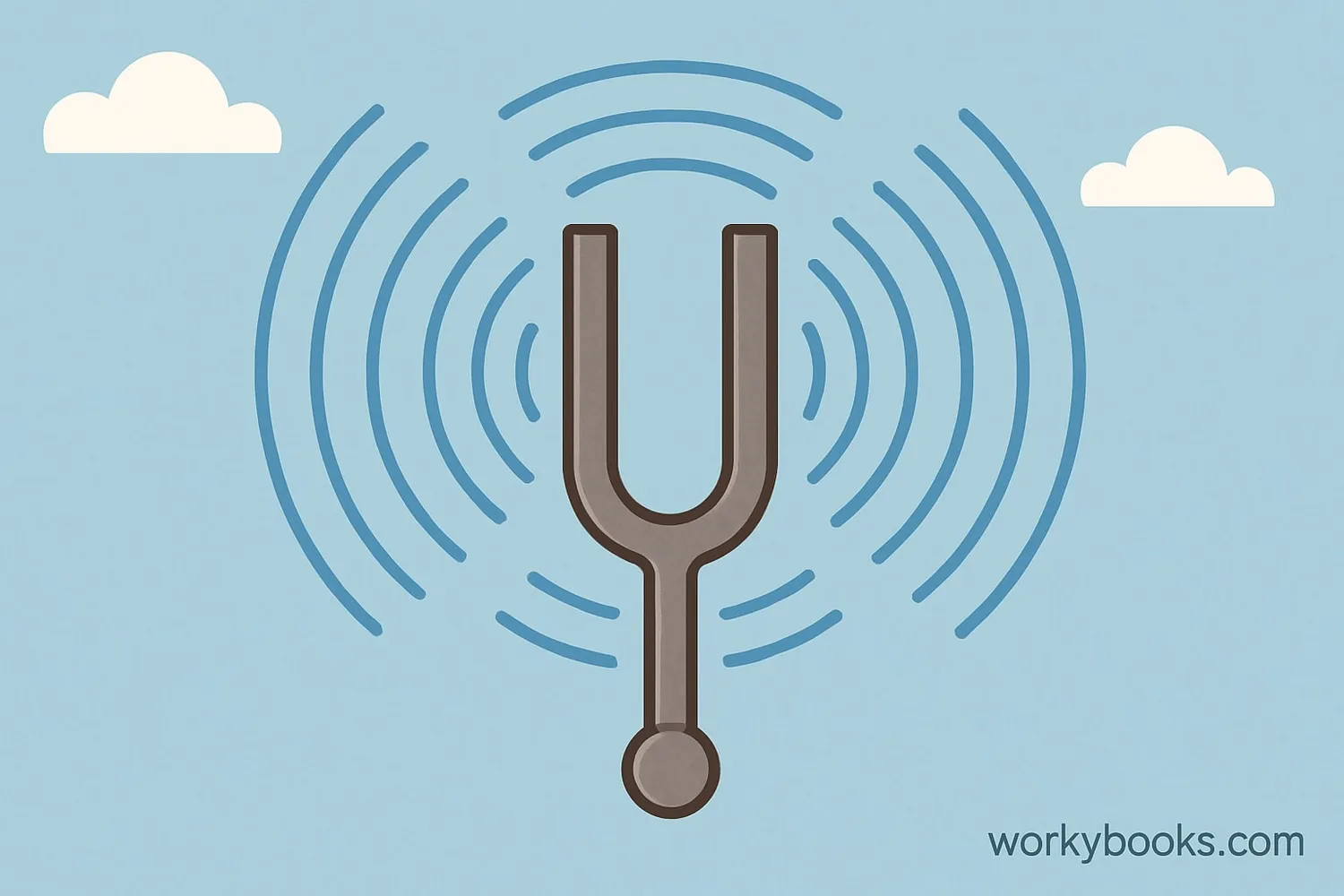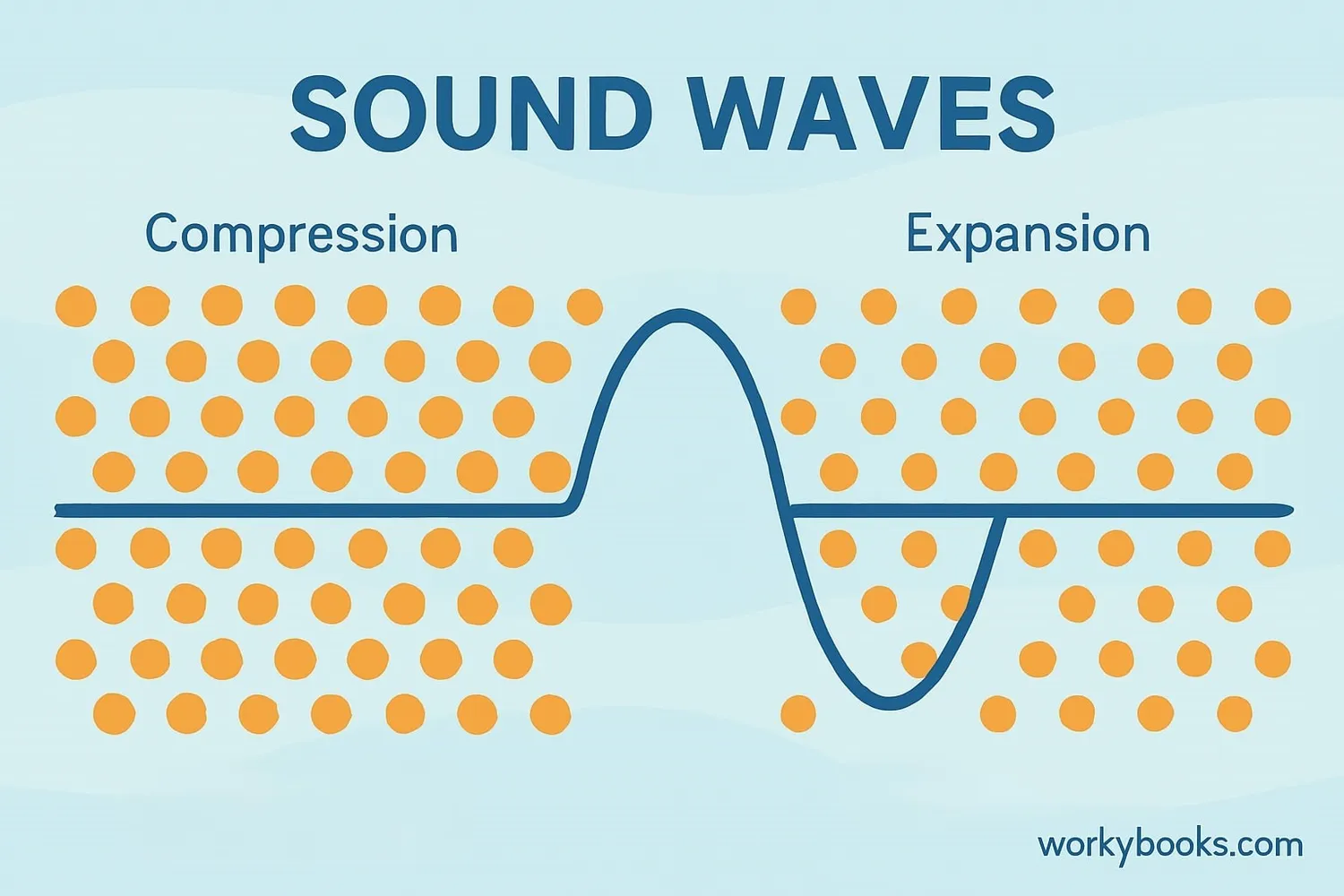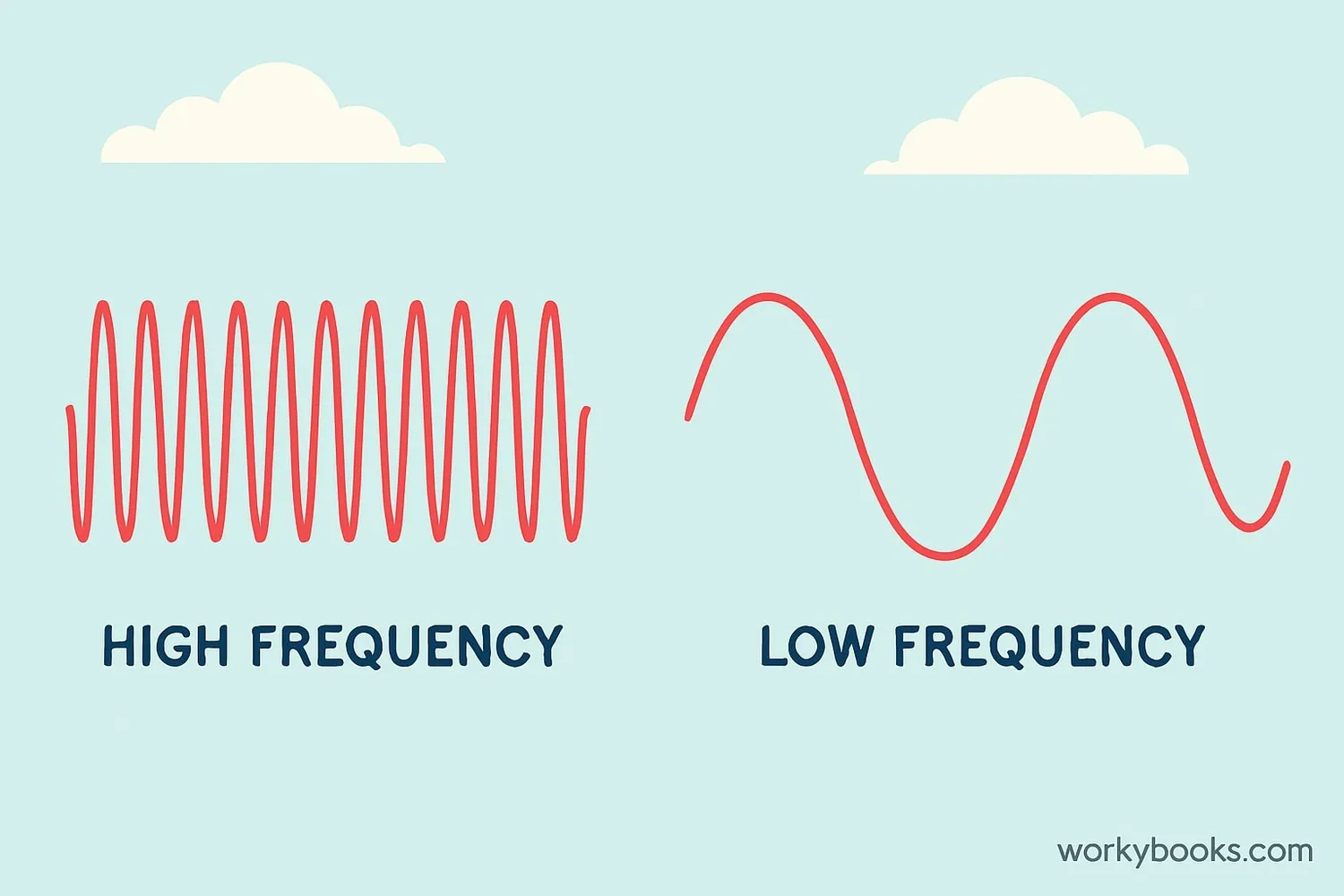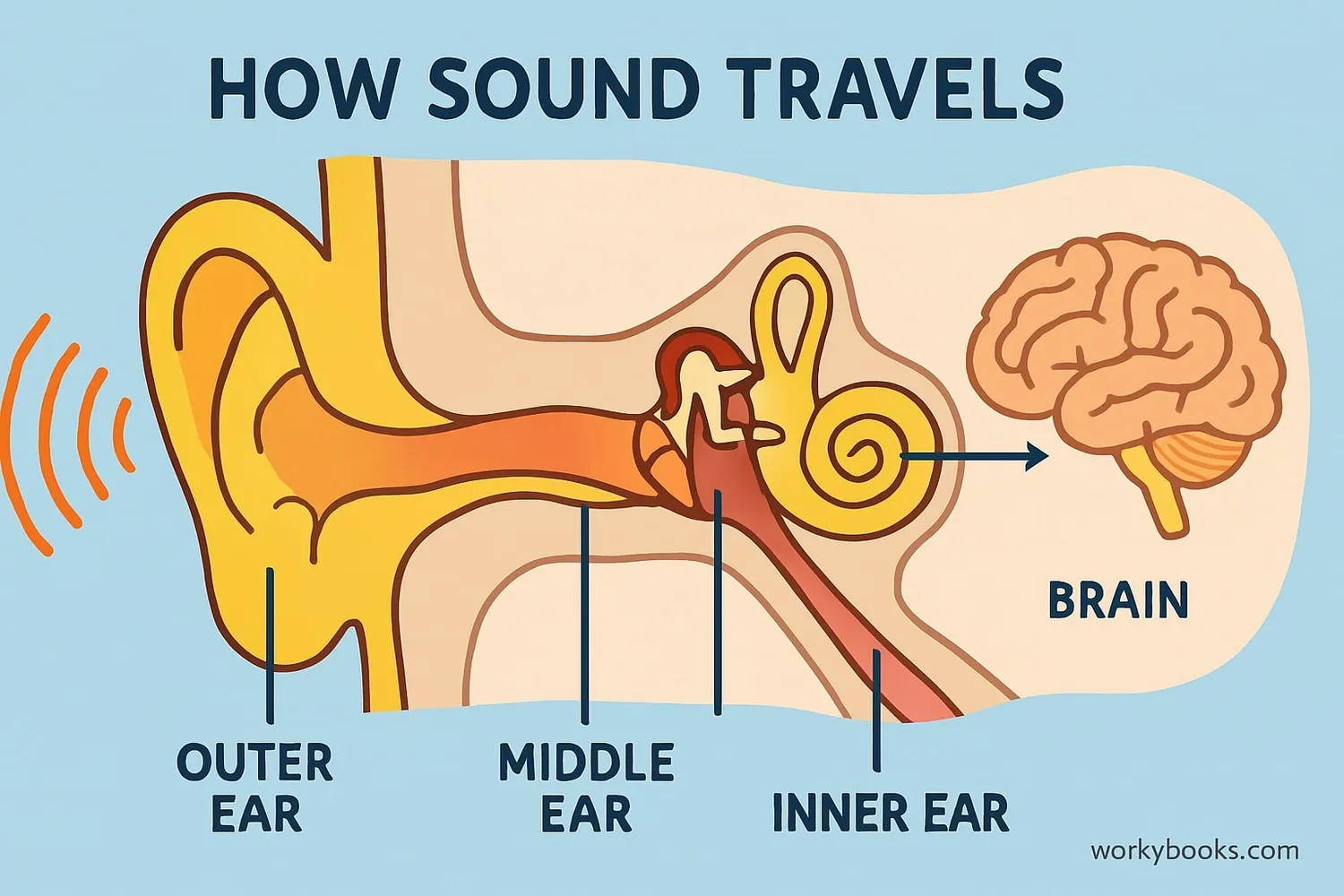Sound Vibration - Definition, Examples, Quiz, FAQ, Trivia
Discover how vibrations create the sounds we hear every day!
What is Sound?

Sound is a form of energy created by vibrations. When an object vibrates, it causes the air molecules around it to move back and forth. This movement creates sound waves that travel through the air to our ears.
Think of dropping a pebble into water - the ripples that spread out are similar to how sound waves travel through the air! Every sound you hear - from a whisper to thunder - starts with something vibrating.
Sound Fact!
Sound needs a medium to travel through. That's why there's no sound in space where there's no air!
How Sound Travels

Sound travels as longitudinal waves through different materials like air, water, or solids. These waves are made of compressions (where molecules are squeezed together) and rarefactions (where molecules are spread apart).
The frequency of a sound wave determines its pitch. Frequency is measured in Hertz (Hz), which tells us how many vibrations happen each second.
Vibration
An object moves back and forth
Wave Creation
Energy transfers to nearby molecules
Wave Travel
Compression waves move through a medium
Reception
Waves reach our ears
Interpretation
Brain processes the sound
Speed of Sound!
Sound travels at about 767 miles per hour in air! That's faster than a jet plane!
Pitch and Volume

Sounds have different qualities that we can identify:
Pitch is how high or low a sound is. High frequency vibrations create high pitches (like a whistle), while low frequency vibrations create low pitches (like a drum).
Volume (or loudness) is determined by the amplitude of the sound wave. Bigger vibrations create louder sounds! Volume is measured in decibels (dB).
High Pitch
Many vibrations per second (high frequency)
Low Pitch
Few vibrations per second (low frequency)
Loud Sound
Large vibration amplitude
Resonance!
When an object vibrates at its natural frequency, it creates resonance - that's how musical instruments produce rich sounds!
How We Hear

Our ears are amazing sound detectors! Here's how hearing works:
1. Sound waves enter the outer ear
2. They travel down the ear canal to the eardrum
3. The eardrum vibrates from the sound waves
4. Tiny bones in the middle ear amplify the vibrations
5. Fluid in the inner ear moves hair cells
6. Nerves send signals to the brain
7. The brain interprets these signals as sound!
Humans can hear sounds between about 20 Hz (low rumbles) and 20,000 Hz (very high pitches).
Hearing Range!
Dogs can hear higher pitches than humans (up to 45,000 Hz), while elephants can hear lower pitches (down to 5 Hz)!
Sound Quiz
Test your sound knowledge with this quiz! Answer all 5 questions to see how much you've learned.
Frequently Asked Questions
Here are answers to some common questions about sound:
Fun Sound Trivia
Discover some amazing facts about sound and vibrations!
Speed of Sound
Sound travels faster through steel than air - about 15 times faster! That's why you can hear a train coming by putting your ear on the track long before you hear it through the air.
Underwater Sound
Blue whales produce the loudest sounds of any animal at 188 decibels - louder than a jet engine! Their low-frequency calls can travel hundreds of miles underwater.
Human Hearing
Newborn babies can hear frequencies up to 20,000 Hz, but most adults lose the ability to hear above 15,000-17,000 Hz as they get older. This is called presbycusis.
Earth's Hum
Our planet constantly produces a low-frequency hum at about 10 millihertz - too low for humans to hear. This comes from ocean waves crashing and atmospheric pressure changes!


